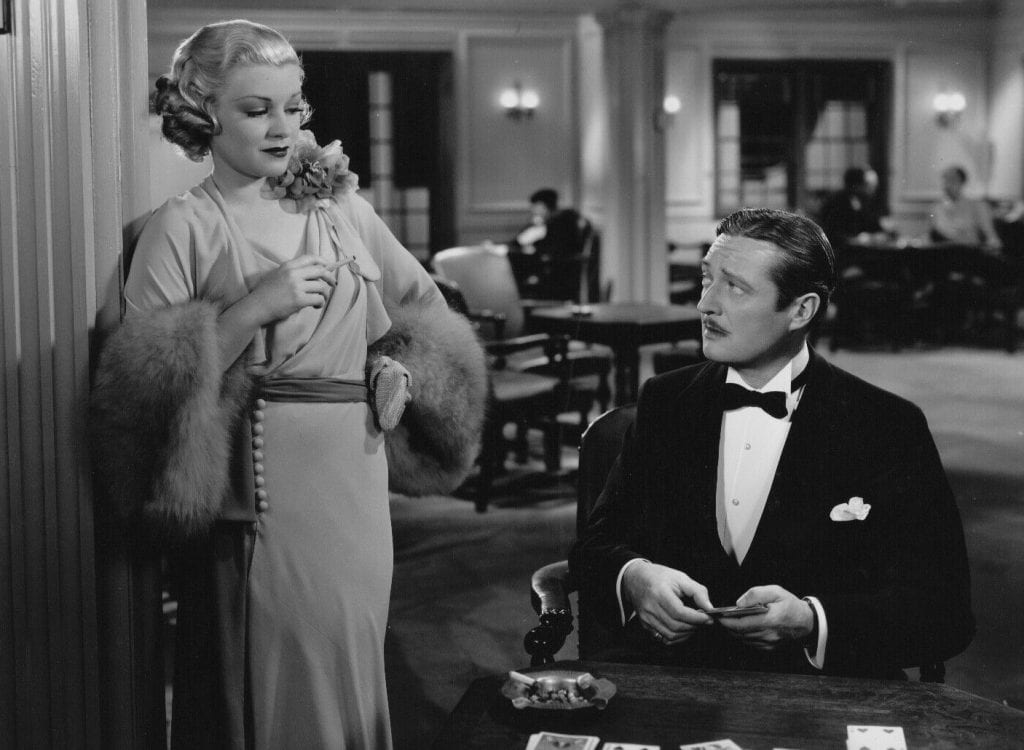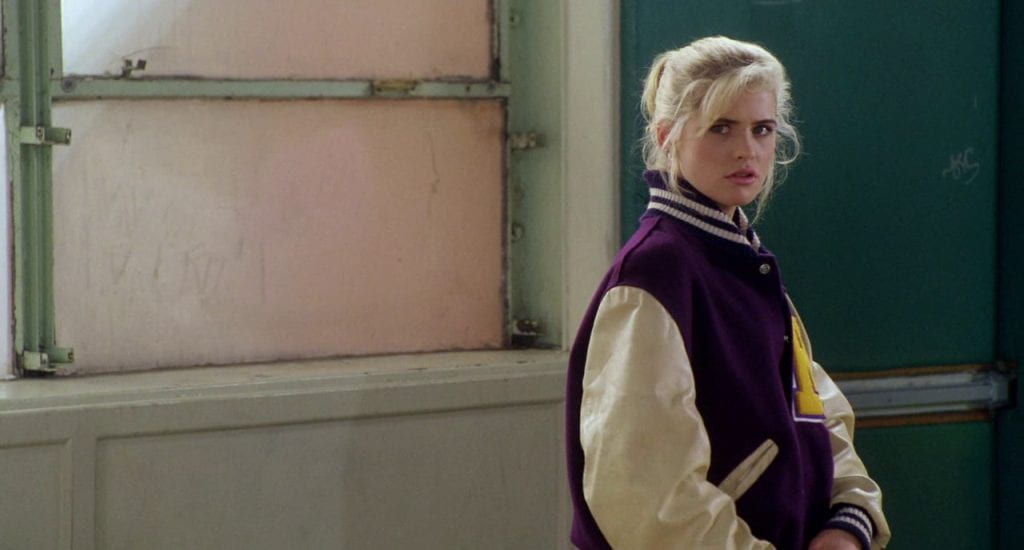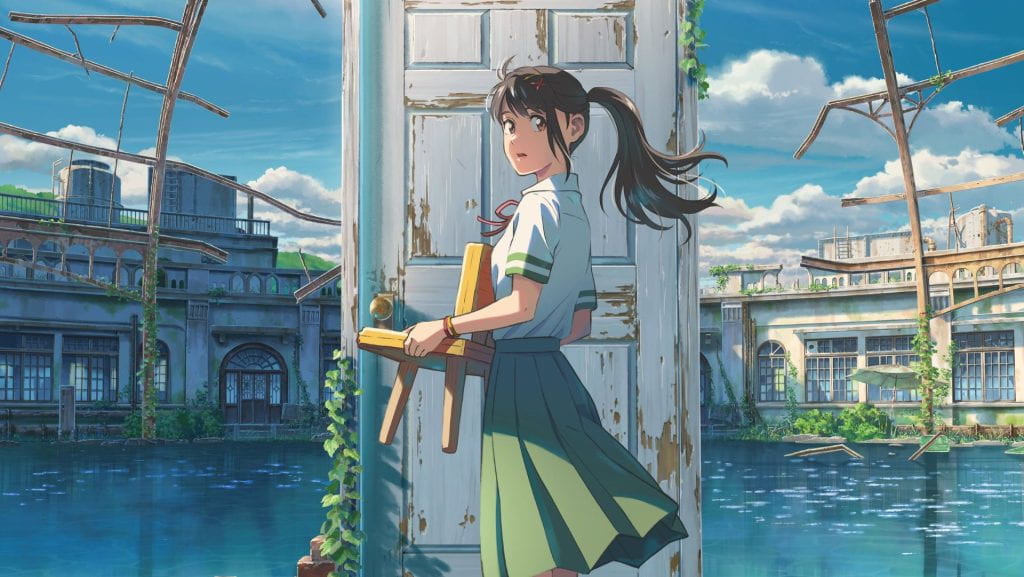



Every month, Establishing Shot brings you a selection of films from our group of regular bloggers. Even though these films aren’t currently being screened at the IU Cinema, this series reflects the varied programming that can be found at the Cinema and demonstrates the eclectic tastes of the bloggers. Each contributor has picked one film that they saw this month that they couldn’t wait to share with others. Keep reading to find out what discoveries these cinephiles have made, as well as some of the old friends they’ve revisited.
Chris Forrester, contributor | The Trial (1963)
My third annual celebration of November as Noirvember led me to the fringes of the genre, where its singular moods and modes of expression leech into films not necessarily generically/stylistically categorizable as noirs but nonetheless inseparable from its influence. One such film is Orson Welles’s waking nightmare of a Kafka adaptation, The Trial. Though not widely considered a noir, it invokes a similar mode of shadowy unreality, perhaps continuing a throughline of progressively more dreamlike noir expression Welles began in the ’40s with The Stranger (1946) and The Lady from Shanghai (1947) and continued in the ’50s with (perhaps his finest film) the towering Touch of Evil (1958). Based on Kafka’s famous story of a man accused of a never-specified crime and caught in a strange, disorienting process of legal nonsense, Welles’s adaptation exists firmly in the shadowy realm of noirish paranoia and doom.
It’s a truly staggering piece of work, overwhelming tonally and visually in its production design, location work and photography, which swirl together to visualize the strange surreality of Josef K’s (Anthony Perkins) predicament. Of specific brilliance is Welles’s editing, which smashes together disparate locations in a way that lends the film’s setting a truly singular feeling of oneiric weirdness. But on a deeper level, the film poses a fascinating transposition of noir styles and influences (especially Welles’s deployment of canted angles and stylized sets borrowed from the German Expressionists) onto material not at first glance recognizable as noir. The Trial proves both an overwhelming sensational experience and a singular stylistic reckoning with Welles’s influences.
Noni Ford, contributor | Buffy the Vampire Slayer (1992)
Buffy the Vampire Slayer is a series oft talked about, discussed, and analyzed by friends of mine perennially. We usually talk not only about Buffy Summers and the Scooby Gang, but more revealingly where each person lands on the Angel vs Spike debate. I’ve talked excessively about this series, the monsters of the week, and my first podcast piece was a ranking of my favorite Buffy episodes. All that being said, I only have a dim memory of the film that predates the series, written by Joss Whedon. I know I definitely watched it before I started the series, but I had almost no memory of anything from that movie besides the school dance outfit at the end (which bears some resemblance to the season one finale outfit in the series). I decided shortly after the official spooky season was over to give it a rewatch in order to remind myself of the origins of Joss Whedon’s ideas for this character and story.
If you’ve watched any Buffy, you’ll pretty quickly see overlap between the Buffy Summers of the show and the Buffy Summers of the movie. It seems at times that the movie was drawn upon for the idyllic before-times the character experienced prior to her move to Sunnydale in the show. This version of her is more popular and unbothered than the girl we see in the later adaptation. At times it is funny watching the movie because it feels like you are seeing Whedon start to build out the bones of what would be one of his most beloved shows.
Kristy Swanson stars as Buffy and Donald Sutherland plays a watcher/vampire expert named Merrick, who is basically just a stand-in for who would become Anthony Stewart Head’s Giles. They play out the hilarity of their circumstances well — a Valley Girl cheerleader who is destined to fight vampires and save the world from evil forces and her frustrated British vampire trainer who wishes she was less of a teenager sometimes — and lean into the comedy of it. Yet to me, the movie makes Buffy too vapid at times and it seems like the missing ingredient is really her ability to break up the levity with more darkness. Of course, the secret alchemy went on to be perfected since the show was so long-running, but it is quite interesting to see what needed to be changed and adapted to make the final product so good.
I see the movie as a sort of proof of concept; it’s not terrible because it led to something great but if you want to launch into the series again or for the first time, it’s not necessary to go back to the movie as a starting point.
Jesse Pasternack, contributor | Suzume (2022)
I have been a big fan of director Makoto Shinkhai since I saw his film Your Name (2016) when I was a senior at IU. I love seeing his new films in theaters whenever they come out. His latest, Suzume, is a beautiful and moving story of one teenager reckoning with her past. It reminds us that Shinkhai is a brilliant director whose career is worth following.
Suzume is about the titular protagonist, a 17-year-old girl who meets a mysterious young man named Souta. Suzume learns that Souta is a “closer” who travels around Japan closing doors that open to another dimension inhabited by a mysterious worm-like creature. When Souta’s soul gets trapped into a chair (which gains the ability to move around and speak thanks to Souta’s consciousness), he and Suzume go on a journey across Japan to save the world. In the process, Suzume confronts and learns the truth about her traumatic past.
This movie, like all of Shinkhai’s most recent films, is stunningly beautiful. The imagery is spectacular and there are so many sequences which show off the freedom and imagination which are inherent to the medium of animation. I was lucky enough to see this film on the big screen twice, but you will marvel at the visual wonders which Shinkahi and his collaborators created even if you watch it on a computer.
While it is visually dazzling, Suzume is not a case of style over substance. Its story is full of interesting twists and turns which will keep you engaged throughout its two hour running time. In addition, its characters are well developed and fascinating, especially Suzume. She is intelligent and delightful, but with an inner sadness which Shinkhai expertly develops as she undergoes her life-altering journey. It is as moving to see her find the strength she needs to fight for what she wants and become the person she is meant to be as it is to see any of the great young adult protagonists in any medium find their place in the world and discover their power. There is a scene near the end where Suzume comforts someone that never fails to blow me away with its cathartic depiction of how much she has grown.
Suzume is Shinkhai’s latest masterpiece and it brilliantly combines his beautiful visual style with the type of emotional narrative which he excels at crafting, but I have a feeling it will not be his last. The only thing I can be sure of in regards to him is that I will be there to see his next film in theaters whenever it has an American release.
Michaela Owens, Editor | Black Sheep (1935)
To my surprise, my favorite new-to-me watch this month was a 1930s caper I had previously never heard of called Black Sheep. Starring Edmund Lowe as a professional gambler and a baby-faced Claire Trevor as a small-time actress with big-time aspirations, the two meet one night on an ocean liner and, just as sparks are starting to fly, notice a young man (Tom Brown) getting cleaned out in a card game by two wealthy older men who clearly took advantage of the kid’s inexperience. When Trevor later saves the man from committing suicide, Lowe steps in and learns that the vampy socialite Brown has been traveling with has recently stolen a priceless necklace and is leveraging Brown’s gambling debts to force him to sneak the stolen goods through Customs when the ship docks. Upon realizing that the boy is his long-lost son, Lowe becomes determined to pull off a con that will wipe out Brown’s debts and free him from the socialite’s clutches.
Now, I know that premise sounds like a lot, but clocking in at just 76 minutes, Black Sheep is a snappy, smart film that is more in line with something like Ocean’s Eleven than a Douglas Sirk melodrama. The dialogue is fizzy; the caper itself has many clever twists; Allan Dwan’s direction is top-notch; and the performances, particularly Lowe’s, are wonderful across the board. Most impressively, despite the “long-lost son” angle, the film never becomes cloying, instead depicting the sweetly organic way a clueless Brown comes to admire this new friend who has taken him under his wing. I’ll admit the resolution to this storyline left me wanting a bit more, but the rest of Black Sheep was such an unexpected delight, I’m willing to let it slide.
If you have the Criterion Channel, be sure to check this one out before it leaves the service at the end of this month!